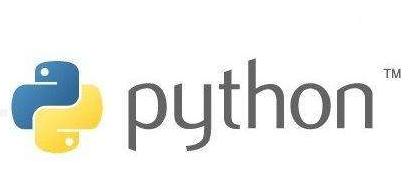python系统学习笔记(一)
来源:网络整理 网络用户发布,如有版权联系网管删除 2018-08-13
1.写第一个Helloworld
当你学习一种新的编程语言的时候,你编写运行的第一个程序通常都是"Hello
World"程序,这已经成为一种传统了
在命令行的shell提示符下键入python,启动解释器。现在输入print 'Hello World',然后
按Enter键。你应该可以看到输出的单词Hello World 。(python 2.7 3.3目前已经是函数了)
如何编写Python程序
下面是保存和运行Python程序的标准流程。
1. 打开你最喜欢的编辑器。
2. 输入例子中的程序代码。
3. 用注释中给出的文件名把它保存为一个文件。我按照惯例把所有的Python程序都以
扩展名.py 保存。
4. 运行解释器命令python program.py或者使用IDLE运行程序。
2.运算符
反复练习!!
Python运算符列表
运算符
描述
x+y,x-y
加、减,"+"号可重载为连接符
x*y,x**y,x/y,x%y
相乘、求平方、相除、求余,"*"号可重载为重复,"%"号可重载为格式化
< span>,< span>,<,<=,==,<>,!=
比较运算符
+=,-=,*=,/=,%=,**=,< span>,<<=,&=,^=,|=
自变运算符
x|y
按位或
x^y
按位异或
x&y
按位与
~x
按位取反
x< span>,x<<y
x向左或向右移y位
is, is not
等同测试
in, not in
是否为成员测试
or,and,not
逻辑运算符
x[i],x[i:j],x.y,x(...)
索引,分片,限定引用,函数调用
(...),[...],{...},'...'
元组,列表,字典,转化为字符串
运算符优先顺序
运算符优先顺序列表(从最高到最低)
运算符
描述
'expr'
字符串转换
{key:expr,...}
字典
[expr1,expr2...]
列表
(expr1,expr2,...)
元组
function(expr,...)
函数调用
x[index:index]
切片
x[index]
下标索引取值
x.attribute
属性引用
~x
按位取反
+x,-x
正,负
x**y
幂
x*y,x/y,x%y
乘,除,取模
x+y,x-y
加,减
x< y>,x<<y
移位
x&y
按位与
x^y
按位异或
x|y
按位或
x,x< yspan>,x==y,x!=y,x<=y,x<y
比较
x is y,x is not y
等同测试
x in y,x not in y
成员判断
not x
逻辑否
x and y
逻辑与
x or y
逻辑或
lambda arg,...:expr
Lambda匿名函数
3. if 语句
1. if else语句
2. if...elif...elif ..else
3. if语句的嵌套
编写条件语句时,应该尽量避免使用嵌套语句。嵌套语句不便于阅读,而且可能会忽略一些可能性。
练习
[python]
#score = raw_input("score:")
#score=int(score)
score=85
# if else demo1
if( score >60):
print 'pass'
else:
print 'fail'
# if elif else demo2
if(score> 90):
print 'A'
elif(score >80) and(score <90):
print 'B'
elif(score>70) and (score<80):
print 'C'
else:
print 'D'
#if include if demo3
a=3;
b=4;
c=5;
if(a>b):
if(c>a):
print 'Max is c'
else:
print 'Max is a'
else:
if(b>c):
print 'Max is b'
else:
print 'Max is c'
print 'done'
4.for 语句
1、一般格式
Python for循环的首行定义了一个赋值目标(或【一些目标】),以及你想遍历的对象,首行后面是你想重复的语句块(一般都有缩进)
for <target> in <object>:
<statements>
else:
<statements>
当ptyhon运行for循环时,会逐个将序列对象中的元素赋值给目标,然后为每个元素执行循环主体。循环主体一般使用赋值的目标来引用序列中当前的元素,就好像那事遍历序列的游标。
for首行中用作赋值目标的变量名通常是for语句所在作用于的变量(可能是新的)。这个变量名没有什么特别的,甚至可以在循环主体中修改。但是当控制权再次回到循环顶端时,就会自动被设成序列的下一个元素。循环之后,这个变量一般都还是引用了最近所用过的元素,也就是序列中最后的元素,除非通过一个 break语句退出了循环。
for语句也支持一个选用的else块,它的工作就像在while循环中一样:如果循环离开时没有碰到break语句,就会执行(也就是序列所有元素都被访问过了)
break和continue语句也可用在for循环中,就像while循环那样。for循环完整的格式如下:
for <target> in <object>:
<statements>
if <test>:break
if <test>:conitnue
else:
<statements>
[python]
a = ['a1', 'a2', 'a3']
b = ['b1', 'b2']
# will iterate 3 times,
# the last iteration, b will be None
print "Map:"
for x, y in map(None, a, b):
print x, y
# will iterate 2 times,
# the third value of a will not be used
print "Zip:"
for x, y in zip(a, b):
print x, y
# will iterate 6 times,
# it will iterate over each b, for each a
# producing a slightly different outpu
print "List:"
for x, y in [(x,y) for x in a for y in b]:
print x, y
[python] view plaincopy
#demo for 'for'
# -*- coding: cp936 -*-
#for in
for i in range(1,5):
print i
#step 2
for i in range(1,5,2):
print i;
#break
for i in range(1,5):
if(i==6):
break
else:
print 'break hello'
#求质数
import math
for i in range(50, 100 + 1):
for j in range(2, int(math.sqrt(i)) + 1):
if i % j == 0:
break
else:
print i
#continue
for i in range(1,5):
if(i==4):
continue
print 'no met continue'
else:
print i
5.while 语句
while循环的一般格式如下:
while <test>:
<statements1>
if <test2>:break
if <test3>:continue
if <test4>:pass
else:
<statements2>
break和continue可以出现在while(或for)循环主体的任何地方,但通常会进一步嵌套在if语句中,根据某些条件来采取对应的操作。
[python]
#demo for while
a=4;
while (a>0):
print a;
a=a-1;
if(a==1):
break
else: www.2cto.com
print 'no meet break'
#continue
a=4;
while (a>0):
print a;
a=a-1;
if(a==1):
continue
print 'no meet continue'
当你学习一种新的编程语言的时候,你编写运行的第一个程序通常都是"Hello
World"程序,这已经成为一种传统了
在命令行的shell提示符下键入python,启动解释器。现在输入print 'Hello World',然后
按Enter键。你应该可以看到输出的单词Hello World 。(python 2.7 3.3目前已经是函数了)
如何编写Python程序
下面是保存和运行Python程序的标准流程。
1. 打开你最喜欢的编辑器。
2. 输入例子中的程序代码。
3. 用注释中给出的文件名把它保存为一个文件。我按照惯例把所有的Python程序都以
扩展名.py 保存。
4. 运行解释器命令python program.py或者使用IDLE运行程序。
2.运算符
反复练习!!
Python运算符列表
运算符
描述
x+y,x-y
加、减,"+"号可重载为连接符
x*y,x**y,x/y,x%y
相乘、求平方、相除、求余,"*"号可重载为重复,"%"号可重载为格式化
< span>,< span>,<,<=,==,<>,!=
比较运算符
+=,-=,*=,/=,%=,**=,< span>,<<=,&=,^=,|=
自变运算符
x|y
按位或
x^y
按位异或
x&y
按位与
~x
按位取反
x< span>,x<<y
x向左或向右移y位
is, is not
等同测试
in, not in
是否为成员测试
or,and,not
逻辑运算符
x[i],x[i:j],x.y,x(...)
索引,分片,限定引用,函数调用
(...),[...],{...},'...'
元组,列表,字典,转化为字符串
运算符优先顺序
运算符优先顺序列表(从最高到最低)
运算符
描述
'expr'
字符串转换
{key:expr,...}
字典
[expr1,expr2...]
列表
(expr1,expr2,...)
元组
function(expr,...)
函数调用
x[index:index]
切片
x[index]
下标索引取值
x.attribute
属性引用
~x
按位取反
+x,-x
正,负
x**y
幂
x*y,x/y,x%y
乘,除,取模
x+y,x-y
加,减
x< y>,x<<y
移位
x&y
按位与
x^y
按位异或
x|y
按位或
x,x< yspan>,x==y,x!=y,x<=y,x<y
比较
x is y,x is not y
等同测试
x in y,x not in y
成员判断
not x
逻辑否
x and y
逻辑与
x or y
逻辑或
lambda arg,...:expr
Lambda匿名函数
3. if 语句
1. if else语句
2. if...elif...elif ..else
3. if语句的嵌套
编写条件语句时,应该尽量避免使用嵌套语句。嵌套语句不便于阅读,而且可能会忽略一些可能性。
练习
[python]
#score = raw_input("score:")
#score=int(score)
score=85
# if else demo1
if( score >60):
print 'pass'
else:
print 'fail'
# if elif else demo2
if(score> 90):
print 'A'
elif(score >80) and(score <90):
print 'B'
elif(score>70) and (score<80):
print 'C'
else:
print 'D'
#if include if demo3
a=3;
b=4;
c=5;
if(a>b):
if(c>a):
print 'Max is c'
else:
print 'Max is a'
else:
if(b>c):
print 'Max is b'
else:
print 'Max is c'
print 'done'
4.for 语句
1、一般格式
Python for循环的首行定义了一个赋值目标(或【一些目标】),以及你想遍历的对象,首行后面是你想重复的语句块(一般都有缩进)
for <target> in <object>:
<statements>
else:
<statements>
当ptyhon运行for循环时,会逐个将序列对象中的元素赋值给目标,然后为每个元素执行循环主体。循环主体一般使用赋值的目标来引用序列中当前的元素,就好像那事遍历序列的游标。
for首行中用作赋值目标的变量名通常是for语句所在作用于的变量(可能是新的)。这个变量名没有什么特别的,甚至可以在循环主体中修改。但是当控制权再次回到循环顶端时,就会自动被设成序列的下一个元素。循环之后,这个变量一般都还是引用了最近所用过的元素,也就是序列中最后的元素,除非通过一个 break语句退出了循环。
for语句也支持一个选用的else块,它的工作就像在while循环中一样:如果循环离开时没有碰到break语句,就会执行(也就是序列所有元素都被访问过了)
break和continue语句也可用在for循环中,就像while循环那样。for循环完整的格式如下:
for <target> in <object>:
<statements>
if <test>:break
if <test>:conitnue
else:
<statements>
[python]
a = ['a1', 'a2', 'a3']
b = ['b1', 'b2']
# will iterate 3 times,
# the last iteration, b will be None
print "Map:"
for x, y in map(None, a, b):
print x, y
# will iterate 2 times,
# the third value of a will not be used
print "Zip:"
for x, y in zip(a, b):
print x, y
# will iterate 6 times,
# it will iterate over each b, for each a
# producing a slightly different outpu
print "List:"
for x, y in [(x,y) for x in a for y in b]:
print x, y
[python] view plaincopy
#demo for 'for'
# -*- coding: cp936 -*-
#for in
for i in range(1,5):
print i
#step 2
for i in range(1,5,2):
print i;
#break
for i in range(1,5):
if(i==6):
break
else:
print 'break hello'
#求质数
import math
for i in range(50, 100 + 1):
for j in range(2, int(math.sqrt(i)) + 1):
if i % j == 0:
break
else:
print i
#continue
for i in range(1,5):
if(i==4):
continue
print 'no met continue'
else:
print i
5.while 语句
while循环的一般格式如下:
while <test>:
<statements1>
if <test2>:break
if <test3>:continue
if <test4>:pass
else:
<statements2>
break和continue可以出现在while(或for)循环主体的任何地方,但通常会进一步嵌套在if语句中,根据某些条件来采取对应的操作。
[python]
#demo for while
a=4;
while (a>0):
print a;
a=a-1;
if(a==1):
break
else: www.2cto.com
print 'no meet break'
#continue
a=4;
while (a>0):
print a;
a=a-1;
if(a==1):
continue
print 'no meet continue'
查看评论 回复

